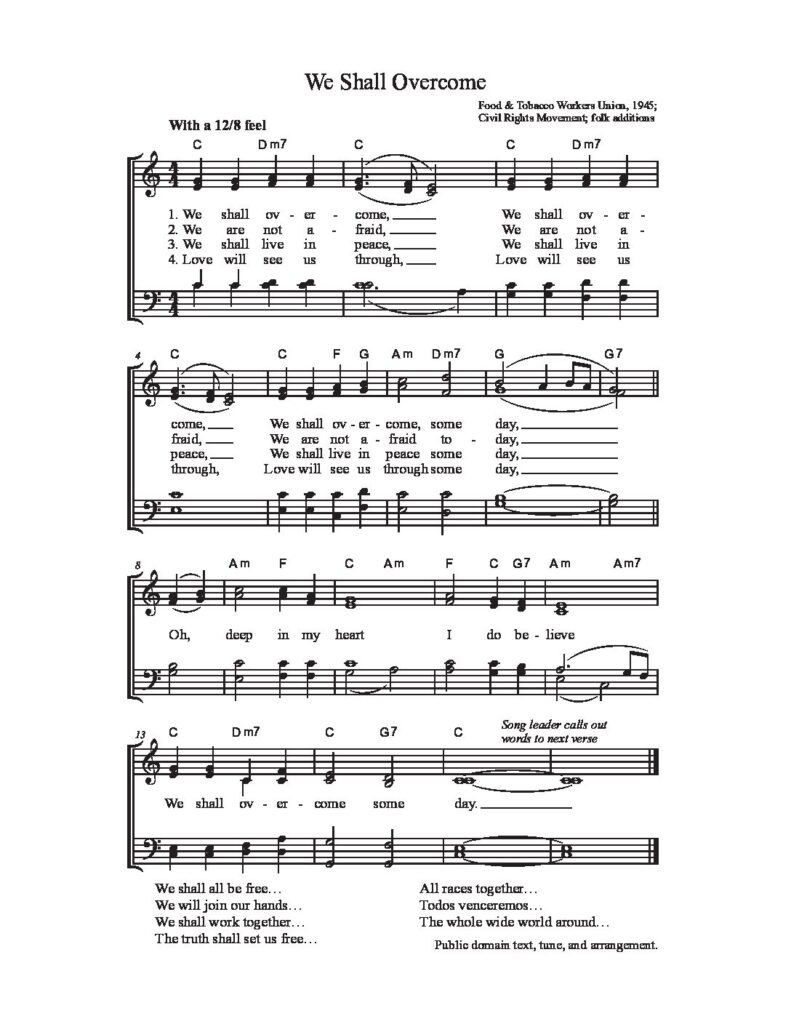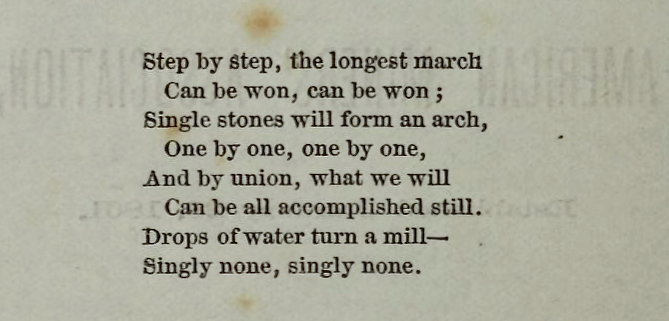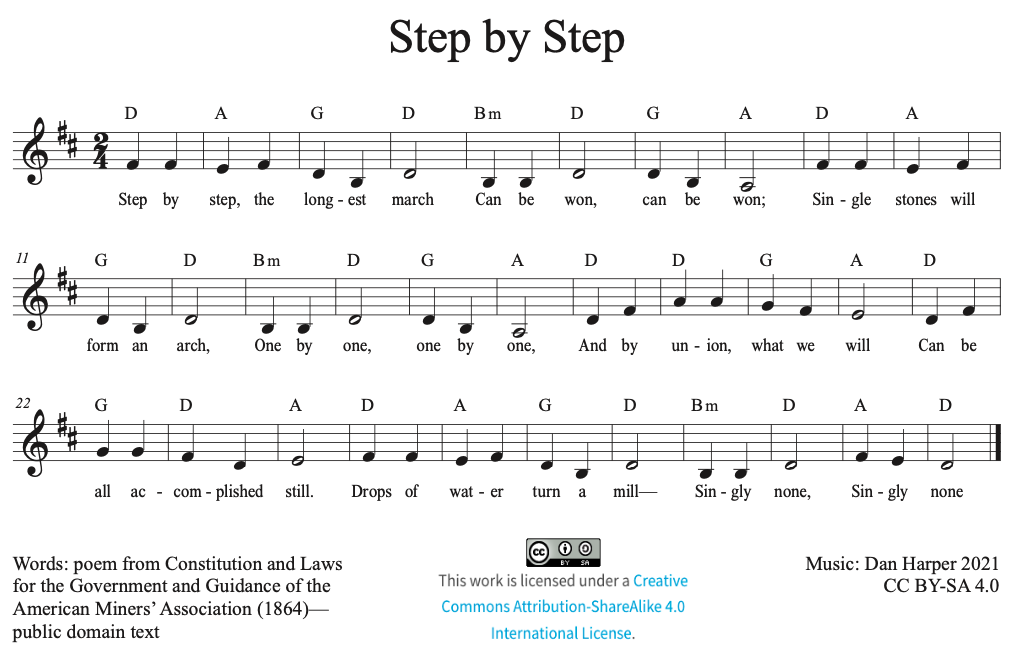I’ve just uploaded PDFs of 5 more copyright-free hymns to this Google Drive folder: “Come By Here” (a.k.a. “Kumbayah”), “Many Thousand Gone,” “Nobody Know the Trouble I’ve Seen,” “Siyahamba,” and “Transience.” All these hymns have appeared in UU hymnals.
Why copyright-free hymns? Because you don’t need a license, which smaller congregations may not be able to afford. Because you can do anything you want with them, including recording them, altering them, projecting lyrics and/or music, etc., etc. In this multiplatform age, we need more copyright-free hymns.
Of the hymns I just uploaded, you might be most interested in “Come By Here.” This is often assumed to be a copyrighted song composed by Marvin Frey. My research shows that this is, in fact, a public domain song. In addition, most of us are sick of the usual, sing-around-the-campfire “Kumbayah,” which can sound a bit dreary. I found alternate public domain tune and lyrics that are more lively, more fun to sing.
“Transience” is also worthy of your attention. It’s one of the songs that got dropped in the transition from the 1964 Songs for the Celebration of Life hymnal to the 1993 Singing the Living Tradition hymnal. The text is by South Asian poet Sarojini Naidu. Not only is it a pretty good poem, but we need more hymns by Asian and Asian American authors and composers.
Information for the five songs is below the fold.
Continue reading “Five more copyright free hymns”



